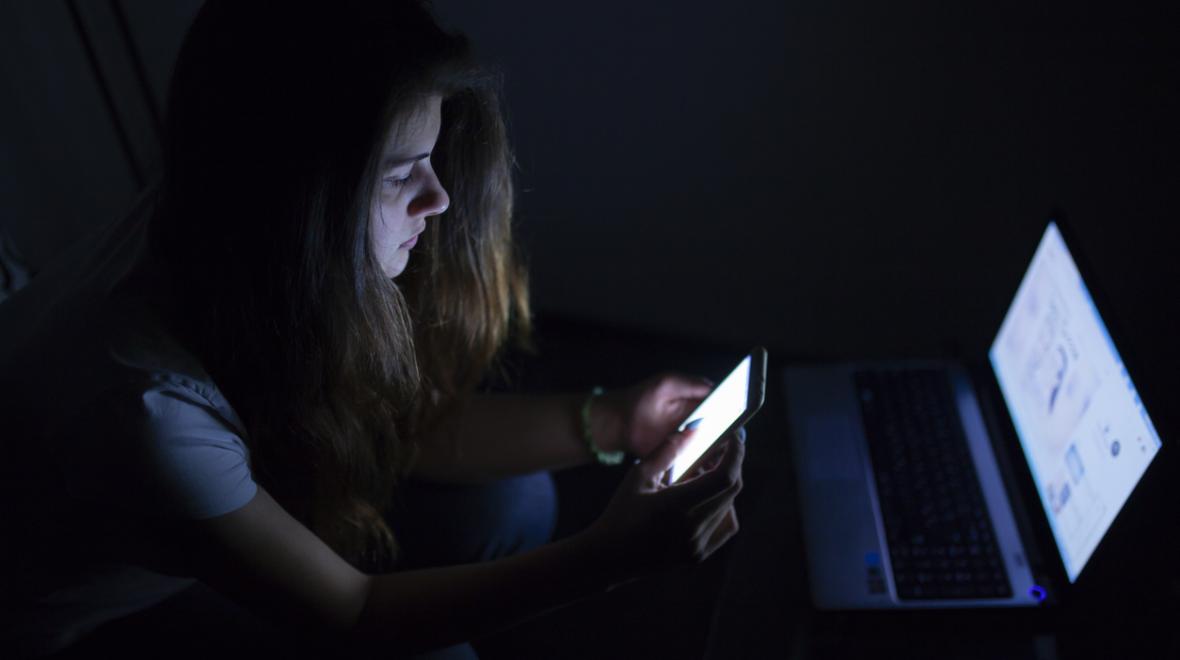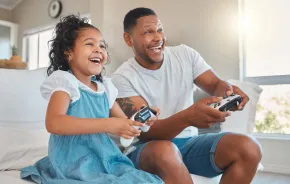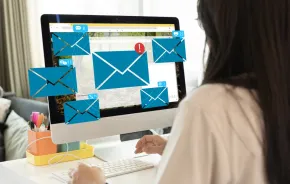
“Why is that man wearing horns?” one of my kids asked, as we sat in front of the television, captivated by videos and images of thousands of insurrectionists storming our nation’s Capitol building.
“They’re breaking the windows! They have guns!” the other one piped up.
Regardless of political affiliation, Americans watched, listened to and read stories coming out of Washington, D.C. about this unprecedented event. It’s hard to believe that the very real news we were all seeing was the result of fake news. The proliferation of falsehoods, framing and outright lies beginning with President Trump and ending with our own social media feeds managed to confuse and anger some members of the public to the point of violence.
They mobbed the Capitol steps, pushed inside and halted congressional proceedings because they thought they were protecting our democracy. Because they thought someone had told them the truth. They believed in a cause built on false pretenses, and to this day, they cannot be persuaded otherwise.
And these actions did not take my kids by surprise. They are in middle school and have long seen on TikTok the calls to march, the demands to Stop the Steal and the threats to legislators who stood in the way of the cause. With video after video of other teenagers espousing opinion as fact and carefully editing news stories to fit their narrative, my kids sometimes get confused as to what is real and what is not. They challenge me to have an answer to the TikTok and Snapchat claims.
This, Helen Lee Bouygues says, is the right way to promote media literacy among kids. She is the president and founder of the research group Reboot Foundation, which studies media literacy and critical thinking in children of all ages. Bouygues has several tips on how we as parents can help our children navigate this new terrain of internet information, and she sat down to talk with ParentMap about the keys to critical thinking for the next generation.
Did lack of media literacy help lead to the storming of the Capitol building?
This insurrection is a culmination of misinformation, disinformation, malinformation or deliberately giving gossip that is misleading. A lot of these people genuinely believe Trump’s lies that the election was stolen.
There is very little awareness from the public that there is a bigger schism between interpretation and understanding because of how people gather information. That is one of the issues leading to this level of insurrection. Ninety percent of the information we gather is online, and 90 percent of that 90 percent is via social media. So, in addition to a lack of media literacy, there is a lack of critical thinking, and [therefore] an increase in cognitive biases. We need to teach this — and how to recognize it — to our children.
How do media literacy and critical thinking work together?
I view media literacy and critical thinking coming hand in hand to better help our children navigate this online world. You can’t do only one — they are a combination.
There are more general critical thinking skills that parents can practice with their kids to set them up for media literacy. In this particular situation, some of them have seen the shocking photos online, and I think it’s really important that the parents ask questions, and in turn have the children ask questions.
The second thing deals with the emotional side of those videos and photos. A lot of them can be shocking. We need to help our children express their emotions; it’s one of the aspects of critical thinking.
Part of critical thinking skills, as well, is putting your emotions into perspective. First, let them express their emotions, so they are not held within, and then continue to have that conversation. This helps them manage their emotions over time.
What are the best ways for parents to begin these conversations?
It can be anywhere. It can be in the car, at the dinner table. The ideal place to start is with something the child is interested in, or something that the child is learning in school. It doesn’t need to be about politics; these skills are transferable. I think the key is, you don’t need a lot of time for this. It can be five, 10 minutes with your child.
And if possible, spend that time online with your child. We need to probably spend a couple of hours with our children and walk through looking at an article, see who actually published it, ask if that source could be biased and why. Is there a private interest group behind it?
How do you get through to children who just want to get their information on TikTok?
It’s a balance of what children want to learn from and where they should be learning from. Parents need to continually take the time to correct this. If your child is interested in sharks, and you type sharks into a search engine, the probability is that the first six videos that come up will be someone getting their leg bitten off. If you type in sharks National Geographic, you’ll actually get information about sharks.
This is for adults, too. In a survey we did, the majority of people thought they were good identifiers of fake news, but when we asked specific questions, checking sources and dates, the actual level was less than their self-perception.
We need to train ourselves not to click on the first search term that comes up. There is a responsibility in schools as well. The Finnish government has made media literacy part of their solution to fake news. In the U.S., this is not required.
Adults need to be more aware of how susceptible they are, and then teachers and parents need to do a better job for the next generation.
How can the United States start implementing critical thinking in schools?
There is the will, and then there is the how, and it was our realization that a lot of people have the will, they just didn’t know how. Another constraint is that so much of a teacher’s evaluation is based on standardized testing; they don’t have time to bring in new subject matters. In a weird way, I am optimistic that this COVID homeschooling situation gives teachers a new way to deal with this, since it’s hard to keep up with Scantron testing at home.
Bouygues also recommends a digital detox, for both children and adults, meaning sign off of all social media platforms for a set period of time, try to get your news from a physical paper or something other than a screen. She says social media platforms are not transparent about their algorithms and will point people to stories, photos and information that can be extreme on one side or the other, and if we are not savvy about it, we won’t challenge that information because it validates our worldview, which is human nature. Detoxing and reading news without an algorithm pushing it can help.
For more information on helping guide your children through the torrents of news messaging on social media and teaching them critical thinking skills, check out the case studies, research, a guide for teaching critical thinking skills and age-appropriate guides for parents presented by the Reboot Foundation.











